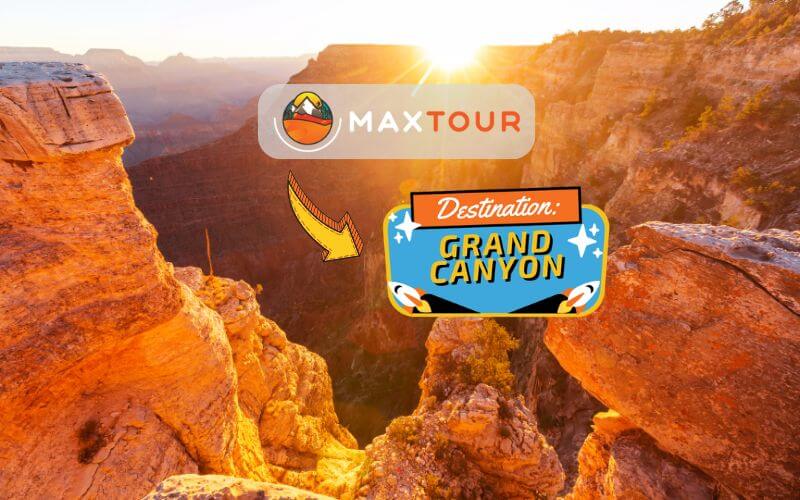The Grand Canyon draws millions of visitors annually, all eager to experience one of the world’s most spectacular natural wonders. While there’s plenty of advice about what you should do when visiting this magnificent landscape, understanding what not to do can be equally important for ensuring a safe, enjoyable, and respectful experience. As seasoned guides who have led countless adventures through this national treasure, we’ve compiled five crucial mistakes to avoid during your Grand Canyon journey.
Don’t Underestimate the Elements
The canyon’s environment can be deceptively dangerous, with extreme temperature variations that catch many visitors unprepared. At the rim, temperatures might feel pleasantly moderate, but descend even partway into the canyon, and you’ll encounter an entirely different climate zone. Summer temperatures along the Colorado River can soar above 110°F (43°C), creating potentially life-threatening conditions for unprepared hikers.
Many travelers booking Grand Canyon tours from Las Vegas arrive dressed for casino comfort rather than desert extremes. Always bring more water than you think you’ll need (at least one gallon per person per day for hiking), wear sun protection, and dress in breathable, moisture-wicking layers. Remember that temperatures can drop dramatically after sunset, even in summer months.
- The temperature difference between the rim and the river can exceed 30°F (17°C)
- Over 250 hikers require emergency rescue from the canyon annually
- The air at the rim is approximately 30% less humid than at the river
Don’t Rush Your Visit
One of the most common regrets we hear from visitors is not allocating enough time to fully appreciate the canyon’s grandeur. Understanding how big is the Grand Canyon helps explain why a hurried visit rarely satisfies: stretching 277 river miles long, up to 18 miles wide, and over a mile deep, this massive landscape deserves more than just a quick photo stop.
Rather than treating the Grand Canyon as a mere checkbox on your itinerary, plan to spend at least a full day exploring various viewpoints, walking portions of the rim trail, attending ranger programs, or even venturing a short distance below the rim on one of the corridor trails. The canyon reveals itself gradually, with changing light throughout the day transforming the colors and shadows across the landscape.
Don’t Ignore Safety Barriers
Every year, tragically, visitors are seriously injured or killed by venturing beyond safety railings for photographs or thrills. The canyon’s edges feature unstable rock, deceptive drop-offs, and loose surfaces that have claimed numerous lives. No photograph is worth risking your life, no matter how spectacular the composition might seem from beyond the barrier.
When researching Vegas to Grand Canyon tour options, choose companies that emphasize safety and responsible viewing practices. Professional guides know the best vantage points that offer both spectacular views and secure footing. They also understand the geology of the rim and can explain why certain areas may appear safe but actually present serious dangers.
- Rock falls occur daily throughout the canyon
- Wind gusts at the rim can exceed 50 mph with little warning
- Many seemingly solid viewpoints have unseen fractures and erosion underneath
Don’t Feed or Approach Wildlife
The Grand Canyon’s ecosystem supports a diverse array of wildlife, from the charismatic California condor to the abundant rock squirrels that frequent popular viewpoints. While these animals might appear tame, they remain wild creatures that deserve respect and distance.
Surprisingly, the most dangerous animals in the park aren’t the rattlesnakes or mountain lions but the seemingly harmless squirrels and deer that have grown accustomed to human handouts. These animals can become aggressive when seeking food, and squirrel bites are among the most common injuries reported in the park. Feeding wildlife also leads to nutritional problems, unnatural behavior, and dangerous human-wildlife interactions.
Don’t Miss the Cultural and Historical Context
While researching Grand Canyon vacation ideas, many visitors focus exclusively on scenic viewpoints while overlooking the rich cultural heritage this landscape holds. The canyon has been home to Indigenous peoples for thousands of years, with some archaeological sites dating back nearly 12,000 years.
Take time to visit the Desert View Watchtower, designed by Mary Colter to honor Indigenous architectural traditions, or explore the Tusayan Museum to learn about ancestral Puebloan culture. Understanding the human history of the canyon adds profound depth to your experience and honors those who have called this place home across millennia.
Bottom Line
Avoiding these five common mistakes will help ensure your Grand Canyon experience is memorable for all the right reasons. By respecting the natural forces at work, allocating adequate time, prioritizing safety, maintaining appropriate distance from wildlife, and embracing the cultural context, you’ll develop a deeper appreciation for this extraordinary landscape. The Grand Canyon rewards thoughtful visitors with experiences that transcend mere sightseeing and become transformative encounters with one of Earth’s most awe-inspiring places.

